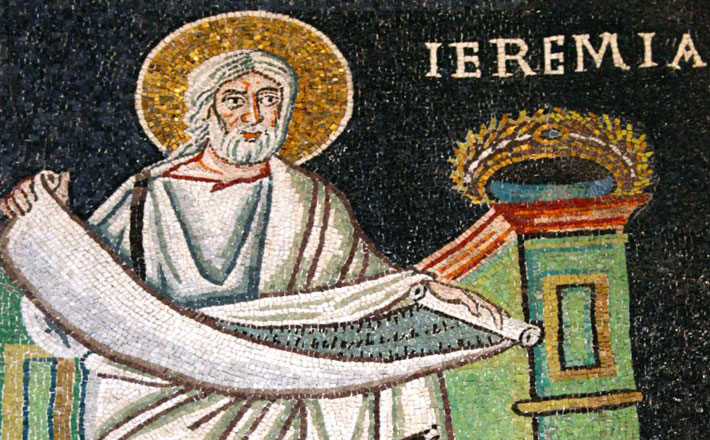Commentary on John 12:20-33
This lectionary pericope is the opening section of Jesus’ final discourse for the world.
Greeks arrive on the scene, find Philip, and make one of the most extraordinary requests of the entire Gospel, “Sir, we wish to see Jesus.” Jesus’ discourse that follows is, in part, a response to this request. If you wish to see Jesus, then this is what you will and must see. There is a reason this verse finds itself carved on or engraved in our pulpits. It is a summative theology of preaching, particularly for the Fourth Gospel. Any sermon on the Gospel of John has this as its goal, the very real presence of Jesus that needs to be experienced by any or all of our human senses. This semester, I experimented with some new exercises in my teaching of preaching. One I borrowed from Tisdale and Troeger’s A Sermon Workbook, where they suggest that students engage in imagining how theological concepts are embodied in our sermons. That is, take a theological theme present in the biblical text on which you are preaching such as sin, salvation, etc., and then describe it in relation to all five senses. What does grace taste like, smell like, feel like, look like, sound like? This gets to the essence of John’s theology.
Jesus’ response to the request of the Greeks announces that the hour has come (meaning the crucifixion, resurrection and ascension). In many respects, what follows is an interpretation of the hour for the world to hear. One way to view Jesus’ last public discourse is as an interpretation of the “final” sign in the Gospel: Jesus’ crucifixion, resurrection, and ascension. Both this discourse and the Farewell Discourse are based on the fact that the hour is here. These two discourses share that perspective and shape what Jesus will say and how he will say it in the chapters that follow.
A call to discipleship
An immediate example of how Jesus’ last public words foreshadow his personal words to the disciples is the image offered in John 12:24. The metaphor of bearing fruit will receive fuller treatment in the image of the vine and the branches in chapter 15. Verse 25 is further commentary on the agricultural metaphor presented in verse 24, but viewed through the lens of the Farewell Discourse has less to do with function of Jesus’ death as it does with the possibility of what the disciples will do when Jesus is gone. They will do greater works than these (John 14:12) because Jesus is returning to the Father. So much of this last discourse from Jesus is about discipleship. To serve Jesus (John 13:16) is to follow Jesus and to follow Jesus is to do the works that he did, to feed and tend his sheep (John 13:36-37; 21:15-19), to testify on his behalf (John 15:27).
Don’t forget who Jesus is
John 12:27 is demonstrative of how different the portrait of Jesus is in the Gospel of John. John’s Jesus would never ask for this cup to pass (John 18:11) but willingly lays down his life in the events that are to come. John 12:28-30 should be reminiscent of both the baptism of Jesus and the event of the Transfiguration in the Synoptic Gospels (Matthew 17:1-9; Mark 9:2-10; Luke 9:28-36), the latter omitted from the Fourth Gospel and the former, the baptism of Jesus, does not include the words from heaven, neither for the benefit of the crowd nor for Jesus. In the Gospel of John, Jesus does not need confirmation of who he is (John 12:30). He is perfectly aware of his origin, his relationship with God, and his identity (John 1:1). The voice from heaven does not confirm Jesus’ origin, his relationship to God, or his identity, but rather testifies that in Jesus, God’s name has been glorified (John 12:28-30).
A moment of decision
This section of John’s Gospel, particularly 12:31-33, is also the moment of judgment because this is the last time the “world” will hear Jesus’ words. To listen to Jesus is to believe in him and this, for all intents and purposes, is the last chance. The ruler of this world will be cast out, which will be acted out in the next chapter, with the departure of Judas to the dark side (13:27-30). This is another example by which to know that what Jesus says is true. Verses 32-33 at first glance seem to foreshadow the crucifixion. At the same time, literally, “what sort of death he was about to die” suggests that the “the sort of death” includes also that that death leads to his resurrection and ascension. When Jesus is lifted up from the earth to draw all people to himself, that lifting up is simultaneously all three events: crucifixion, resurrection, and ascension. The Farewell Discourse provides confirmation of this in that Jesus’ parting words are not just in anticipation of his death, but in anticipation of his ascension, perhaps a far more difficult reality to face than his inevitability in a tomb. To what extent the ascension is even harder theologically because of the resurrection? Jesus must prepare his disciples for his twice departure, his death and his ascension.
As the Gospel lection chosen for the last Sunday of Lent, this passage might help our parishioners imagine a theological trajectory that fully realizes the implications of the crucifixion but also gives witness to what we know lies beyond — the resurrection and ascension. This is not to discount Good Friday or to suggest a fast-forward to the “good parts” of Lent. Rather, it is to acknowledge that the Jesus of John is preparing his disciples for more than his death. Let’s be honest. We know death. We know it all too well. Much, much harder is to imagine the truth of resurrection and the comfort of ascension.
(For further discussion, see Karoline M. Lewis, John: Fortress Biblical Preaching Commentaries, http://store.fortresspress.com/store/search?ss=Karoline+M.+Lewis&c=-1)


March 22, 2015